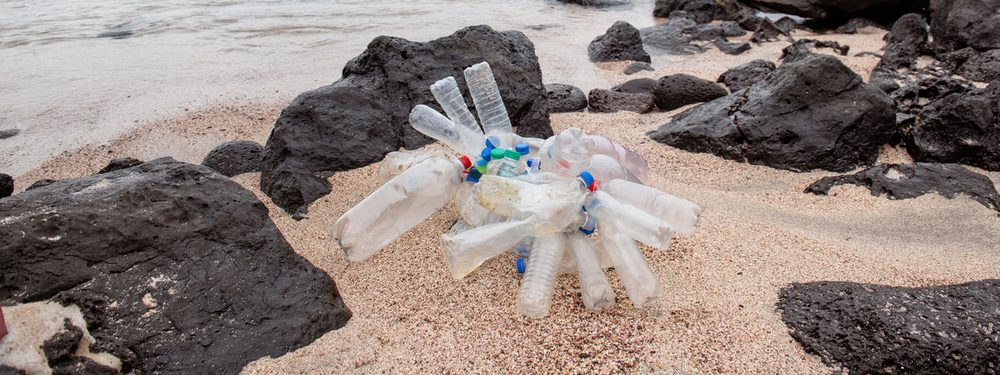February 28, 2019

More than one million plastic bottles are purchased every minute around the world, according to this recent study. That’s 20,000 plastic bottles a second, or 480 billion bottles a year. Our oceans, lakes and rivers often become the final dumping ground, and wildlife bear the brunt of our waste.
At this rate, there will be more plastic than fish in the sea by 2050.
You can help ensure garbage doesn’t replace wildlife by leading a Great Canadian Shoreline Cleanup.
Plastic oceans and littered lakes
Just how much plastic is in our oceans? Scientists estimate that there are 18,000 pieces of plastic floating in every square kilometre. Each year, another eight million metric tons of plastic waste is added to the marine environment – the equivalent of emptying a garbage truck every minute.
Litter now span every single ocean. Even the remotest parts of the world, in areas where very few humans touch, plastic has left its mark, carried and broken down by ocean currents.
Less is known about the impact of plastics in our lakes and rivers, but as more research is undertaken it’s becoming apparent that our freshwater ecosystems aren’t immune. Studies in the Great Lakes and Ottawa River reveal a higher density of microplastics than in ocean samples.
Waste and wildlife
It’s not just the abundance of plastic making headlines, but the consequences of our waste on wildlife.
Last month, an endangered North Atlantic right whale was found dead in the Gulf of St. Lawrence, snarled in fishing rope. It’s one of hundreds of species that end up entangled in fishing gear, nets, strapping bands and plastic bags. Once entangled, animals may not be able to swim, find food or surface to breath, while others suffer chronic injuries.
Seabirds provide one of the starkest examples of how garbage impacts wildlife. Experts predict that 99 per cent of all seabirds will be eating plastic by 2050, an epidemic that’s causing birds to die, their stomachs full of colourful, undigested bits of plastic. It’s not just seabirds mistaking litter for food – more than half of sea turtles are eating debris.
As plastic is broken down, it can be eaten by almost any type of marine life, eventually making its way through the food chain and onto our plates.
Don’t let garbage replace wildlife
Help keep a shoreline clean. It’s estimated that 80 per cent of plastic originates on land. By participating in the Great Canadian Shoreline Cleanup, you can pick up debris before it has the chance to get into our rivers, lakes, streams and oceans.



